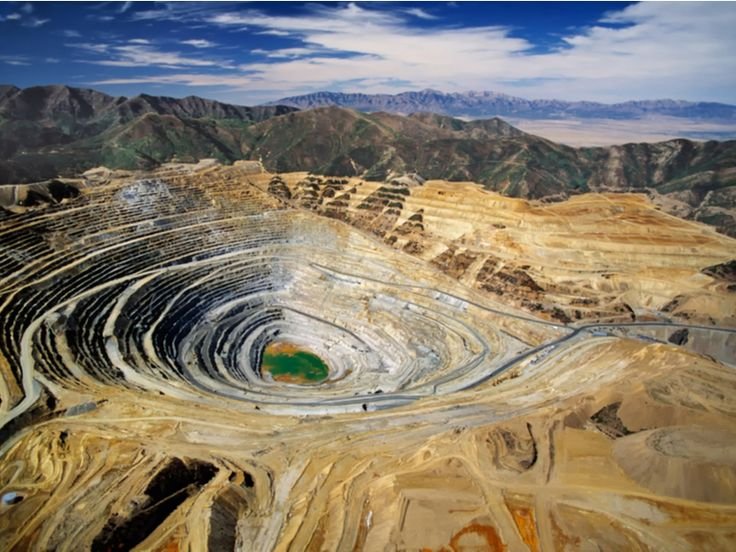
Mining is one of the most important industries globally, responsible for extracting minerals and resources essential for economic growth and development. However, there are various methods of mining, each with its advantages and challenges. Two of the most widely used methods are underground mining and open-pit mining. But which method is more efficient?
In this blog post, we’ll explore both mining techniques, their advantages, disadvantages, and efficiency factors to help you understand which method might be better under different circumstances.
What is Underground Mining?
Underground mining is a method used to extract minerals that are located deep beneath the Earth’s surface. This process involves creating tunnels, shafts, or declines to access ore deposits that are too deep for open-pit mining to reach. Underground mining is used when the mineral deposits are deep or located in areas that would be impractical or dangerous to mine using open-pit techniques.
Advantages of Underground Mining
– Minimized Surface Impact: Since underground mining doesn’t disturb the land surface as much as open-pit mining, it is ideal for areas where preserving the landscape and ecosystem is crucial.
– Ideal for Deep Deposits: Underground mining is the preferred method for extracting valuable minerals that are deep beneath the earth’s surface, such as gold, diamonds, and certain metals.
– Less Environmental Disruption: With minimal surface disturbance, underground mining causes less environmental damage, especially when compared to open-pit mining.
Disadvantages of Underground Mining
– Higher Costs: The construction and maintenance of tunnels, shafts, and ventilation systems can be very costly, making underground mining a more expensive method.
– Riskier Operations: The complexity of working underground increases the risk of accidents, such as tunnel collapses and exposure to harmful gases.
– Slower Process: Due to the need for careful tunneling and handling, underground mining tends to be slower than open-pit mining.
What is Open-Pit Mining?
Open-pit mining, also known as open-cast or surface mining, is a method of extracting minerals from the Earth’s surface. The process involves digging large, terraced pits to access the ore deposits. This method is often used for minerals that are located near the surface, such as copper, coal, and iron ore.
Advantages of Open-Pit Mining
– Lower Costs: Open-pit mining is generally cheaper than underground mining due to fewer infrastructure requirements. The extraction process is faster, and it requires fewer workers.
– Faster Extraction: Since it involves large-scale excavation, open-pit mining allows for quicker removal of materials compared to underground methods.
– Easier Access to Ore: Minerals located near the surface are much easier to extract using open-pit mining, allowing miners to access and process large amounts of ore at once.
Disadvantages of Open-Pit Mining
– Environmental Impact: One of the biggest drawbacks of open-pit mining is its environmental impact. The large-scale excavation of land can lead to habitat destruction, deforestation, and water pollution.
– Not Suitable for Deep Deposits: Open-pit mining is not effective for extracting minerals that are deep underground. In such cases, the pit becomes too deep to be feasible or safe to continue.
– Land Degradation: The vast pits left behind can cause long-term environmental issues, including erosion, soil degradation, and contamination of local water systems.
Comparing Efficiency: Underground Mining vs. Open-Pit Mining
The efficiency of each method largely depends on the characteristics of the mineral deposit being mined, the depth of the ore, environmental considerations, and the cost-effectiveness of the operation. Let’s break it down:
– Depth of Deposit: Underground mining is far more efficient when the mineral deposit is deep beneath the earth’s surface, where open-pit mining cannot reach. Open-pit mining is more efficient for deposits located near or at the surface, as it allows for easier and faster access to ore.
– Cost: Open-pit mining tends to be more cost-effective, especially for shallow ore bodies. The method requires less capital investment and is generally faster. Underground mining incurs higher costs due to the need for building and maintaining tunnels, shafts, and additional safety measures. However, it may still be the more economical option if the mineral deposit is deep and cannot be accessed through open-pit mining.
– Environmental Impact: Underground mining has a much smaller environmental footprint compared to open-pit mining. The surface land remains largely undisturbed, which is important in areas with significant ecosystems. Open-pit mining has a much larger environmental impact, as it involves clearing large amounts of land and can result in long-term environmental damage, including soil erosion, habitat destruction, and pollution.
– Speed: Open-pit mining is typically faster as it involves larger-scale excavation and the removal of larger volumes of ore in a shorter time. Underground mining tends to be slower because it requires detailed planning, careful excavation, and more labor-intensive processes.
Which is More Efficient?
The efficiency of underground versus open-pit mining ultimately depends on the characteristics of the ore deposit and the specific goals of the mining operation. For shallow deposits or those close to the surface, open-pit mining is generally more efficient, both in terms of cost and speed. For deep deposits, where ore is located far beneath the surface, underground mining is more efficient. despite its higher cost due to the inability of open-pit mining to access deep mineral bodies. In conclusion, both methods have their place in the mining industry. The choice between underground and open-pit mining depends on various factors, including the deposit’s depth, the cost structure, and environmental concerns.
